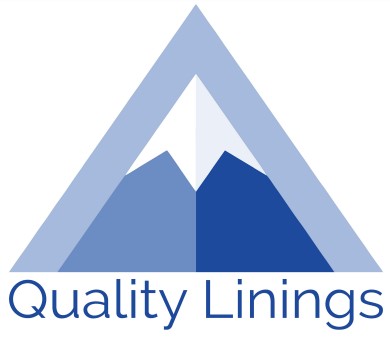Preparing for Winter and the Impact of Cold Weather on Industrial Coatings
Protecting Industrial Coatings: Prepare for Winter Weather before it Wreaks Havoc
Winter weather can wreak havoc on industrial coatings, causing significant damage if not properly protected. As temperatures drop and harsh weather conditions set in, it's important to understand the impact that winter can have on your coatings and take proactive measures to safeguard them. In this article, we will explore the various ways in which winter weather can damage industrial coatings, from freezing temperatures to moisture infiltration, and discuss the steps you can take to mitigate these risks. By understanding the unique challenges that winter presents, you can ensure the longevity and durability of your coatings, saving you time and money in the long run.
We are Quality Linings & Painting, a company specializing in industrial coatings, and our years of experience have provided us with a well of knowledge about preparing for winter weather. Stay tuned as we delve into the key considerations and best practices for protecting your industrial coatings during the colder months.
Importance of Protecting Industrial Coatings
Industrial coatings serve as the frontline defense against a variety of environmental factors that can lead to degradation and failure of materials. These coatings not only enhance aesthetic appeal but also provide critical barriers against corrosion, abrasion, and chemical exposure. In industries such as manufacturing, construction, and marine applications, the integrity of these coatings is essential for the longevity and safety of equipment and structures. Protecting industrial coatings ensures that assets remain functional and visually appealing, minimizing the need for costly repairs or replacements.
One of the primary reasons to protect industrial coatings is to maintain operational efficiency. When coatings fail due to environmental stressors, it can lead to significant downtime as repairs are carried out. This is especially pertinent in industries that rely on heavy machinery and infrastructure, where even minor disruptions can result in substantial financial losses. By ensuring that coatings are well-protected, companies can avoid these interruptions and maintain productivity throughout the winter months, ultimately safeguarding their bottom line.
Additionally, the regulatory environment in many industries mandates adherence to specific coating standards and performance metrics. Failing to protect these coatings can lead to non-compliance with safety regulations, resulting in penalties and legal repercussions. Protecting industrial coatings not only preserves the physical assets but also ensures that companies remain compliant with industry standards, thereby protecting their reputation and operational licenses. This proactive approach to maintenance can lead to improved relationships with clients, stakeholders, and regulatory bodies.
Effects of Winter Weather on Industrial Coatings
Winter weather presents a unique set of challenges that can significantly impact the effectiveness of industrial coatings. One of the most apparent effects is the drop in temperatures, which can lead to the hardening and brittleness of certain coatings. When coatings become brittle, they lose their flexibility and are more susceptible to cracking and chipping. This can compromise the protective layer that shields underlying materials from corrosive elements, leading to accelerated deterioration and repair costs.
Moisture infiltration is another critical concern during the winter months. As snow and ice accumulate on surfaces, they can penetrate the coating layer, leading to issues such as rust formation and mold growth. The freeze-thaw cycle can exacerbate these problems, as water trapped beneath the coating expands when frozen and contracts when thawed, potentially causing delamination and blistering. This cycle can create a vicious loop of damage, where each freeze-thaw cycle further degrades the protective coatings, leading to significant repair challenges.
Moreover, ice accumulation can introduce additional weight and stress on structures, particularly in the case of roofs and overhead installations. This added strain can lead to the physical failure of coatings that may not have been designed to withstand such extreme conditions. Consequently, understanding the effects of winter weather on industrial coatings is crucial for implementing effective protective measures that ensure their longevity and functionality throughout the colder months.
Common Issues Caused by Winter Weather
Several common issues arise from the adverse effects of winter weather on industrial coatings. One significant issue is corrosion, which can occur when moisture penetrates the protective layer of the coating. As temperatures drop, this moisture can freeze, causing it to expand and further compromise the integrity of the coating. Once the coating is breached, the metal or substrate underneath is exposed to the elements, leading to rust and corrosion that can quickly escalate if not addressed promptly.
Another prevalent problem is the development of blisters and peeling. When water infiltrates the coating and subsequently freezes, it can create small blisters as the ice expands. As temperatures rise and the ice melts, these blisters may pop, leading to peeling or flaking of the coating. This not only detracts from the visual appeal of the surface but also diminishes the protective qualities of the coating, leaving the underlying material vulnerable to damage.
Lastly, the formation of ice and snow on coated surfaces can lead to physical damage over time. Accumulated ice can create significant weight, which may cause structural strain and even failure if the coatings are not adequately maintained. Additionally, the increased risk of slip hazards can result in workplace accidents, further emphasizing the need for diligent attention to coating protection during winter months. Addressing these common issues requires proactive measures to ensure that industrial coatings remain intact and functional throughout the season.
Preparing for Winter for Your Industrial Coatings
Preparing industrial coatings for winter involves a comprehensive assessment and proactive maintenance strategy. One of the first steps is to conduct a thorough inspection of all coated surfaces. This inspection should focus on identifying any existing damage, such as cracks, peeling, or signs of corrosion. Addressing these issues before winter sets in can prevent further deterioration during the cold months. Repairing damaged areas with appropriate patching materials ensures that the surface is ready to withstand winter conditions.
Additionally, applying a protective topcoat can provide an extra layer of defense against winter weather. Topcoats designed for cold weather can enhance the durability of the underlying coatings and provide better resistance against moisture infiltration. Selecting the right products that are specifically formulated for winter use is crucial, as they can improve adhesion and flexibility in colder temperatures. This preparation step not only enhances the performance of the coatings but also extends their lifespan significantly.
Another essential aspect of preparing for winter is ensuring that all surfaces are clean and free from debris before the onset of winter. Dirt, grease, and contaminants can compromise the adhesion of coatings, leading to premature failure. Cleaning surfaces thoroughly, followed by appropriate drying processes, creates an ideal environment for coatings to bond effectively. By investing time in proper preparation, companies can protect their industrial coatings and mitigate the risks associated with winter weather.
Prepare for Winter Weather: Best Practices for Maintaining Industrial Coatings in Winter
To ensure the longevity and effectiveness of industrial coatings during winter, adhering to best practices is essential. One vital practice is to monitor environmental conditions regularly. This involves keeping an eye on temperature fluctuations, humidity levels, and precipitation forecasts. Understanding these conditions allows for timely interventions, such as applying protective treatments or conducting inspections after significant weather events. This proactive approach can prevent minor issues from escalating into major problems.
Another best practice is to establish a regular maintenance schedule for coated surfaces. This schedule should include routine inspections and cleaning to remove ice, snow, and debris that can accumulate over time. Regular maintenance not only enhances the aesthetic appeal of the coatings but also contributes to their overall durability. Implementing a routine cleaning regimen can help identify potential issues early, allowing for prompt repairs before winter weather exacerbates any damage.
Furthermore, utilizing advanced technologies such as thermal imaging can be beneficial for assessing the condition of industrial coatings. This technology allows for the detection of moisture intrusion and other hidden problems that may not be visible to the naked eye. By integrating such technologies into maintenance practices, companies can gain valuable insights into the health of their coatings and take necessary actions to address any issues before they develop into costly repairs.
Tips for Preventing Damage to Industrial Coatings
Preventing damage to industrial coatings during winter requires a combination of strategic planning and timely actions. One effective tip is to invest in high-quality coatings that are specifically designed to withstand cold weather conditions. These coatings often contain additives that enhance their flexibility and resistance to moisture, making them more resilient against the harsh winter environment. By choosing the right coating products, companies can reduce the likelihood of coating failures and extend the life of their assets.
Another crucial tip is to ensure proper application techniques are followed during the coating process. This includes adhering to manufacturer guidelines regarding temperature and humidity levels during application. Applying coatings in optimal conditions enhances their performance and adhesion, reducing the risk of damage during winter. Additionally, allowing sufficient curing time before exposing the coatings to winter elements is essential for achieving maximum durability.
Finally, educating employees about the importance of coating maintenance can foster a culture of care and responsibility. Providing training on proper maintenance techniques, inspection protocols, and the significance of addressing minor issues promptly can empower teams to take proactive measures. By creating awareness and promoting a sense of ownership, companies can significantly reduce the risk of damage to industrial coatings during the winter months.
Protective Measures for Industrial Coatings in Order to Prepare for Winter Weather
As you are preparing for winter, implementing protective measures for industrial coatings is vital to ensure their longevity and effectiveness. One of the most effective measures is to install physical barriers, such as awnings or canopies, to shield coated surfaces from direct exposure to snow and ice. These barriers can help minimize the accumulation of moisture and reduce the likelihood of freeze-thaw cycles damaging the coatings. By strategically positioning these structures, companies can provide an additional layer of protection for their assets.
Another important protective measure is the application of anti-icing agents or de-icing materials on surfaces that are prone to ice formation. These agents can help prevent the buildup of ice, thereby reducing the strain on coatings. However, it is crucial to select products that are compatible with the coatings to avoid any chemical reactions that could lead to damage. Conducting tests on a small area before full application can help ascertain compatibility and effectiveness.
Furthermore, ensuring that drainage systems are functioning correctly can prevent water accumulation on coated surfaces. Clogged gutters and downspouts can lead to water pooling, which increases the risk of moisture infiltration and subsequent damage to coatings. Regular maintenance of drainage systems, along with periodic inspections, can mitigate the risk of water-related issues during winter. By taking these protective measures, companies can significantly enhance the resilience of their industrial coatings against winter weather challenges.
Professional Services for Winterizing Industrial Coatings
Engaging professional services for winterizing industrial coatings can provide an added layer of assurance in protecting valuable assets. These professionals possess the expertise and specialized equipment necessary to conduct comprehensive inspections and assessments of coated surfaces. They can identify potential vulnerabilities that may not be immediately visible and recommend appropriate solutions to address them effectively. By leveraging their knowledge, companies can ensure that their coatings are prepared for the rigors of winter.
Additionally, professional services often offer advanced treatments and protective coatings designed specifically for winter conditions. These products are formulated to withstand extreme temperatures and moisture, providing enhanced durability and resistance to environmental stressors. By utilizing these specialized services, companies can benefit from the latest advancements in coating technology and ensure the highest level of protection for their assets.
Finally, hiring professionals for winterizing industrial coatings can save time and resources in the long run. While DIY approaches may seem cost-effective, the potential for mistakes can lead to costly repairs and extended downtime. Professionals can efficiently execute winterization strategies, ensuring that coatings are adequately protected without compromising operational efficiency. By investing in professional services, companies can achieve peace of mind knowing that their industrial coatings are well-prepared for winter challenges.
Need Help Preparing for Winter? We Can Help
Winter weather poses significant challenges to industrial coatings, making it imperative for companies to take proactive measures to protect their assets. Understanding the importance of these industrial coatings and how important it is to prepare for winter weather conditions can help organizations implement effective strategies that ensure the longevity and durability of their surfaces. By preparing coatings for winter, adhering to best practices for maintenance, and utilizing professional services, companies can mitigate the risks associated with cold weather.
As the winter months approach, it is crucial to conduct thorough inspections, apply protective treatments, and engage in regular maintenance routines. These actions not only extend the life of industrial coatings but also contribute to overall operational efficiency and compliance with industry regulations. By fostering a culture of care and responsibility around coating maintenance, companies can safeguard their investments and ensure the continued functionality of their equipment and structures.
In conclusion, protecting industrial coatings during winter is a multifaceted endeavor that requires diligence, knowledge, and strategic planning. By embracing the insights and recommendations discussed in this article, businesses can navigate the challenges of winter weather with confidence, ensuring that their coatings remain intact and effective throughout the cold months and beyond.
Call Quality Lining & Painting at (303) 307-1313 or click here to learn about our field services.
Thanks for giving this article a read!
Leader in applications of High-Performance Coating, Intumescent (Fire Proofing) Coating, Powder Coating, Spray Applied Linings, Sand Blasting, and Rubber Lining.
We pride ourselves on Quality Work, Timely Deliveries, Excellent Customer Service and a Progressive Attitude.
Quality Linings & Painting is dedicated to improving the work and community. We’ve demonstrated this with our QLP Cares program giving back to causes around the work and our local community.




